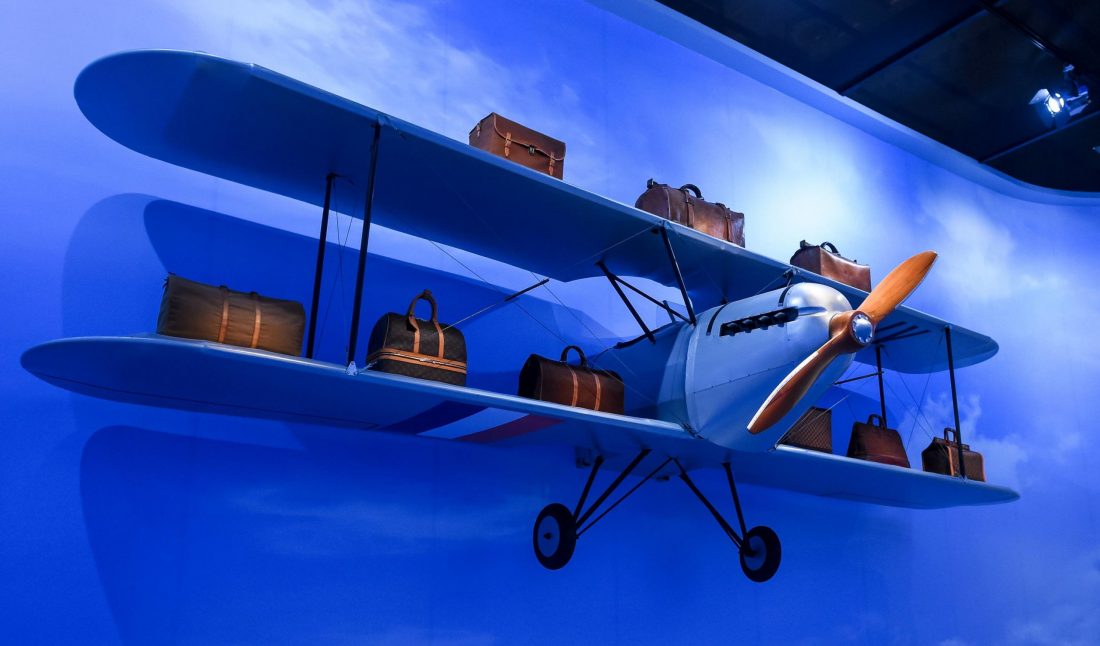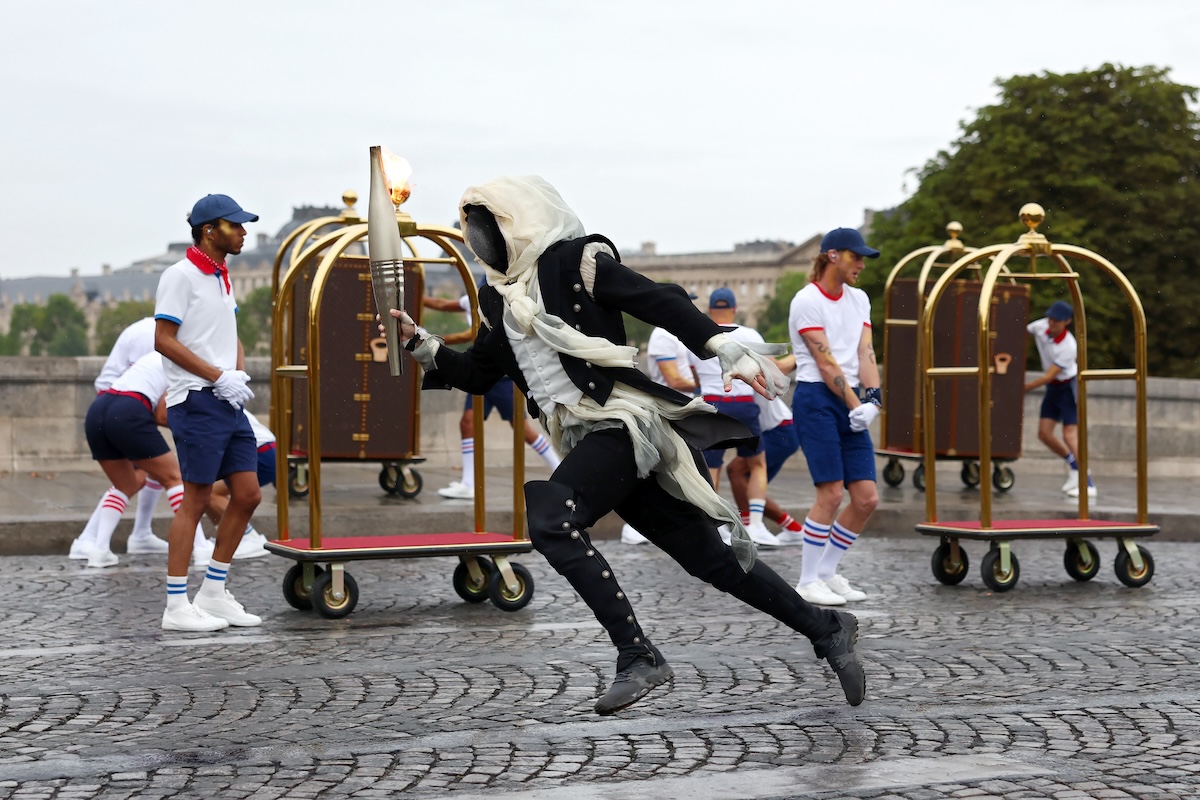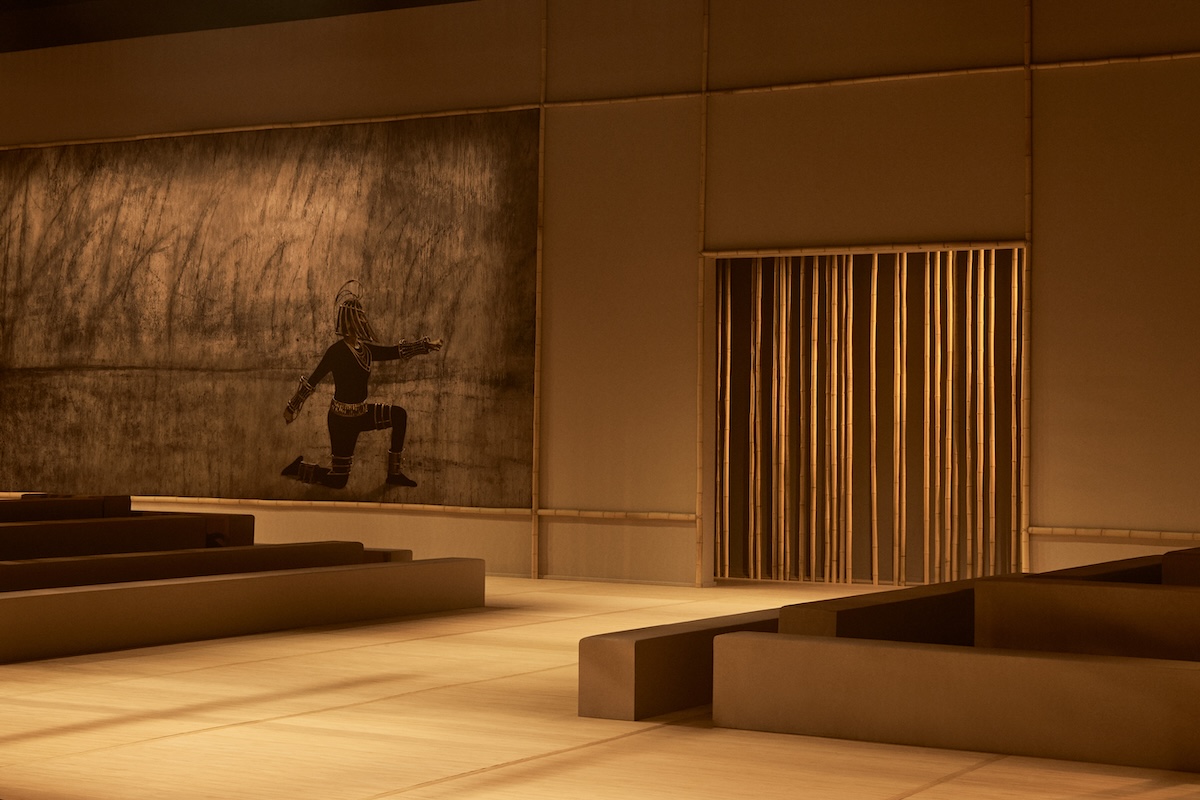This weekend is your last chance to see Louis Vuitton’s massive exhibition in New York, “Volez Voguez, Voyagez.” Running over two floors of the American Stock Exchange Building downtown, the historic show traces the journey of the French luxury house from its founding in 1854 to today. On view are early trunks, specialized luggage, documents from the archives, design curios, items on loan from the Musée de la Mode de la Ville de Paris, and more, all curated by fashion historian Olivier Saillard.
With, as the title of the show suggests, a focus on travel, there are immersive galleries devoted to trains, planes, and automobiles, as well as two rooms focusing on Louis Vuitton’s connection with the U.S., in the late 19th century.
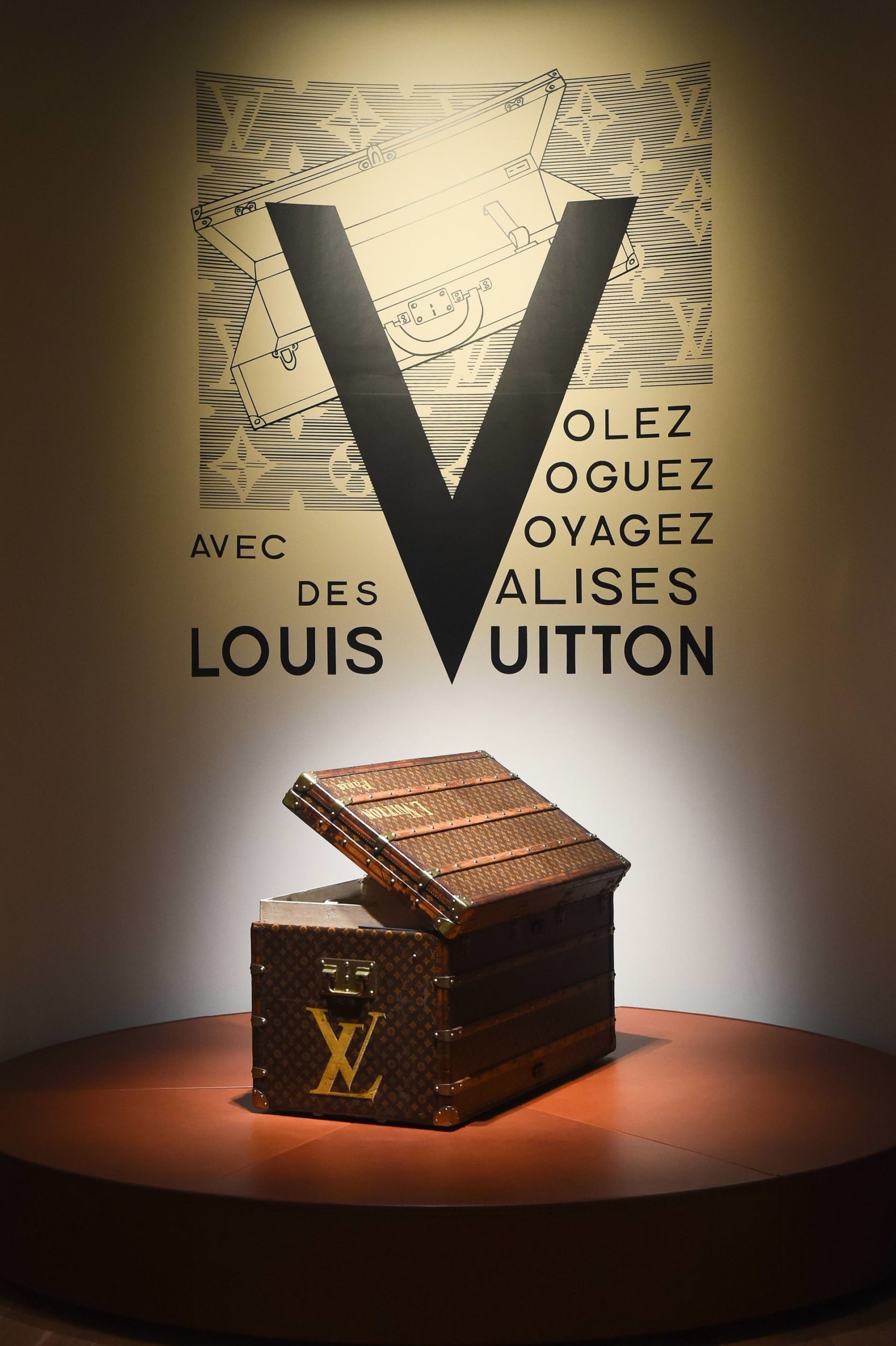 Installation view of Louis Vuitton’s “Volez Voguez Voyagez” in New York
Installation view of Louis Vuitton’s “Volez Voguez Voyagez” in New YorkPhoto by BFA
On the opening day, Whitewall spoke with Saillard about the depths of Louis Vuitton’s archives, and some notable objects visitors should be sure not to miss.
WHITEWALL: Given your deep knowledge of fashion history, when you went into the Louis Vuitton archives, was there anything that surprised even you?
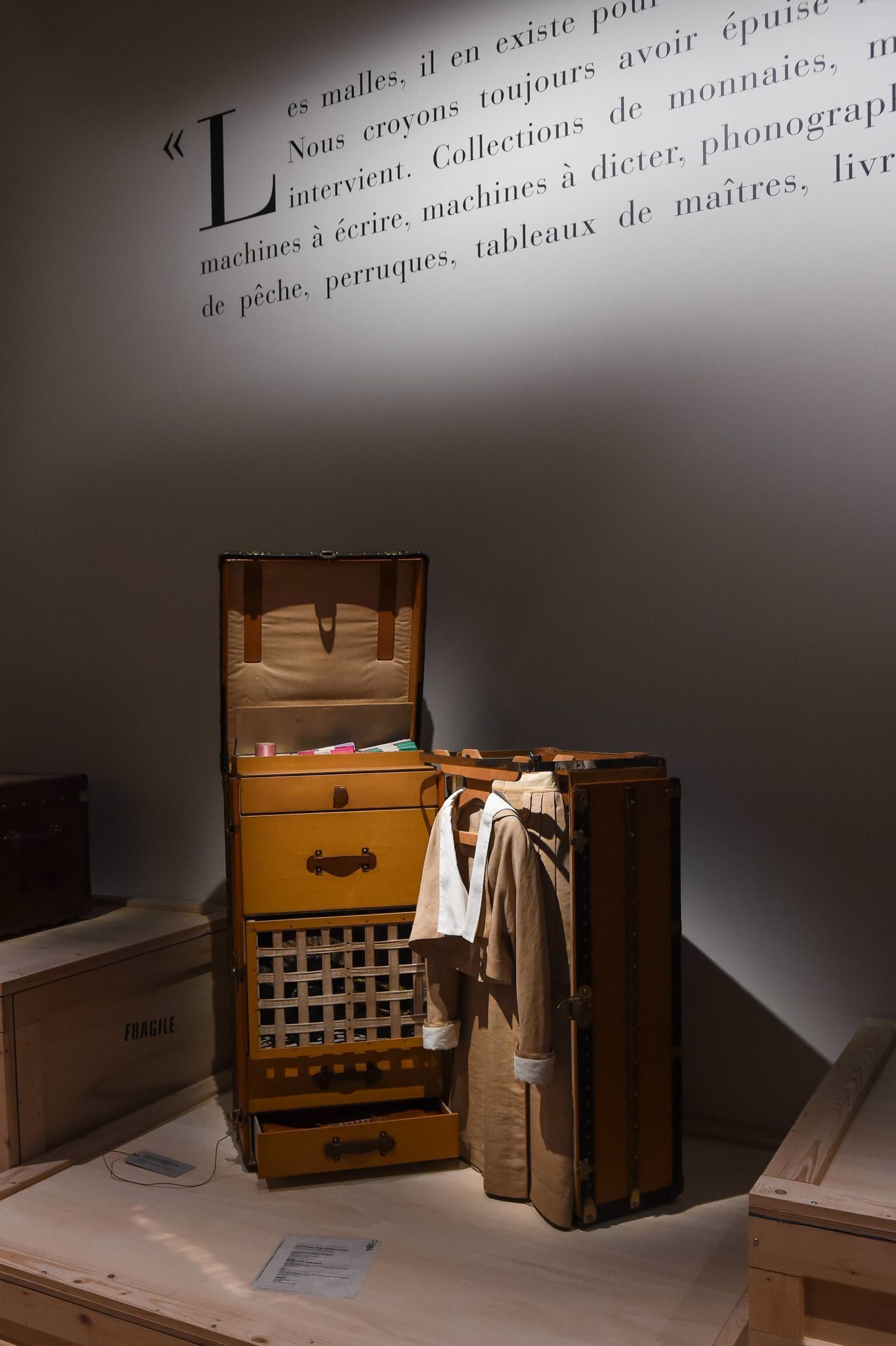 Installation view of Louis Vuitton’s “Volez Voguez Voyagez” in New York
Installation view of Louis Vuitton’s “Volez Voguez Voyagez” in New YorkPhoto by BFA
OLIVIER SAILLARD: Yes! When Bernard Arnault asked me to do the exhibition, I said I wanted to see all the archives over three or four months, three times a week. I want to be immersed in the archives. I was very surprised to see how huge they were. They have one of the most important archives devoted to a brand. Immediately I understood that I didn’t know the full story of Louis Vuitton.
For example, I didn’t know (and it’s a shame coming from a director of a fashion museum!) that Louis Vuitton, when he was 14 years old, left his family in eastern France to go to Paris on foot! He founded his company [in 1854], and became famous as Charles Frederick Worth, the founder of haute couture. Louis Vuitton and Charles Frederick Worth were the founders of modern luxury.
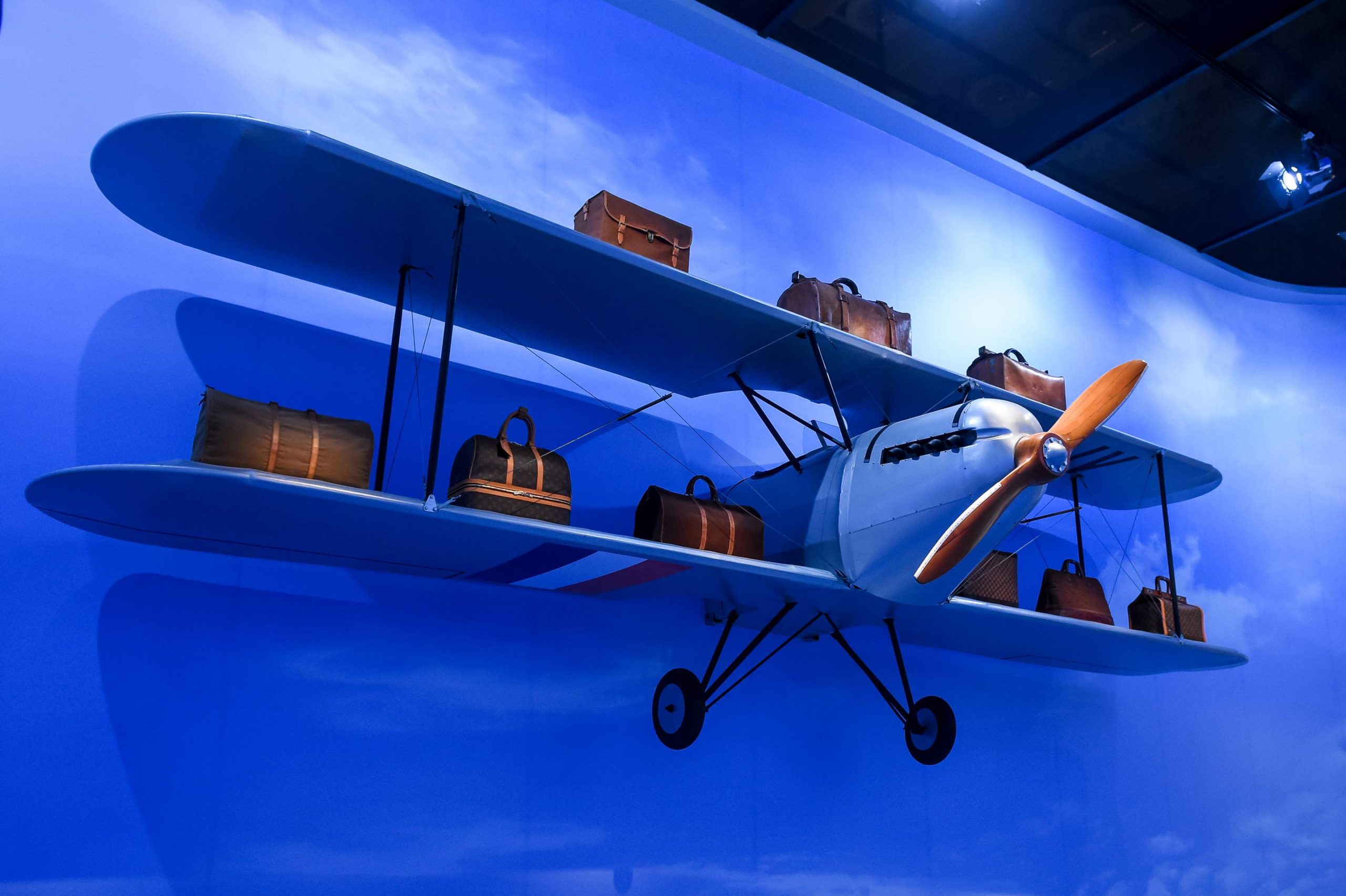 Installation view of Louis Vuitton’s “Volez Voguez Voyagez” in New York
Installation view of Louis Vuitton’s “Volez Voguez Voyagez” in New YorkPhoto by BFA
And Louis Vuitton’s grandson, Gaston-Louis, stole my heart. He was very romantic, he was very passionate. He was a bibliophile, he was an editor. He’s someone in the story of Louis Vuitton who is very different.
WW: Can you tell me about Gaston-Louis’ collection of historic curio trunks—perhaps our favorite part of the show?
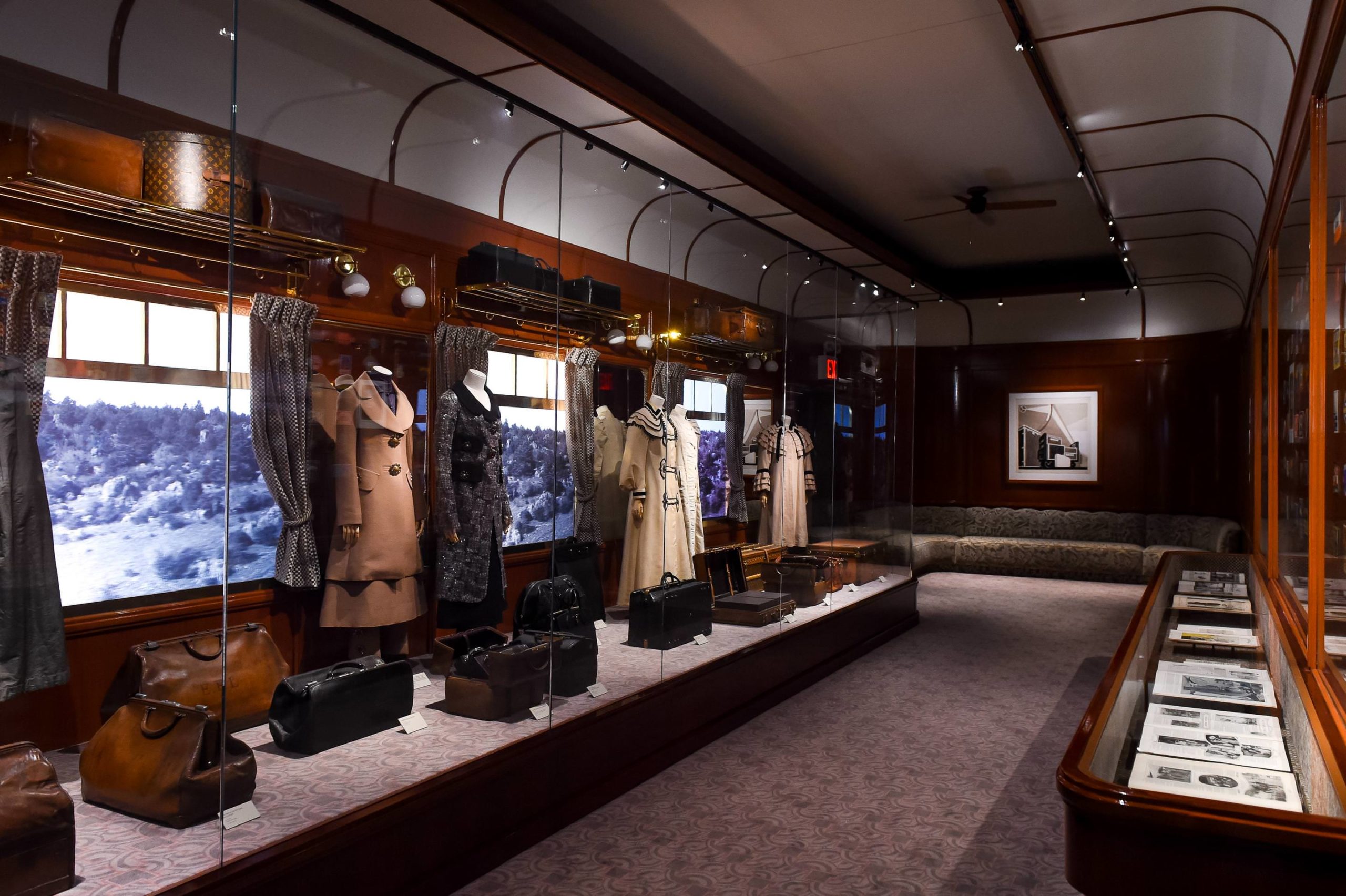 Installation view of Louis Vuitton’s “Volez Voguez Voyagez” in New York
Installation view of Louis Vuitton’s “Volez Voguez Voyagez” in New YorkPhoto by BFA
OS: It was Gaston-Louis who decided in the 20th century to collect every trunk he could find all around the world. He realized probably one of the best collections devoted to trunks from all over the world from different periods.
They are all very unique and they show that despite the country you come from, despite the decade you live in, you always need something to transport your life.
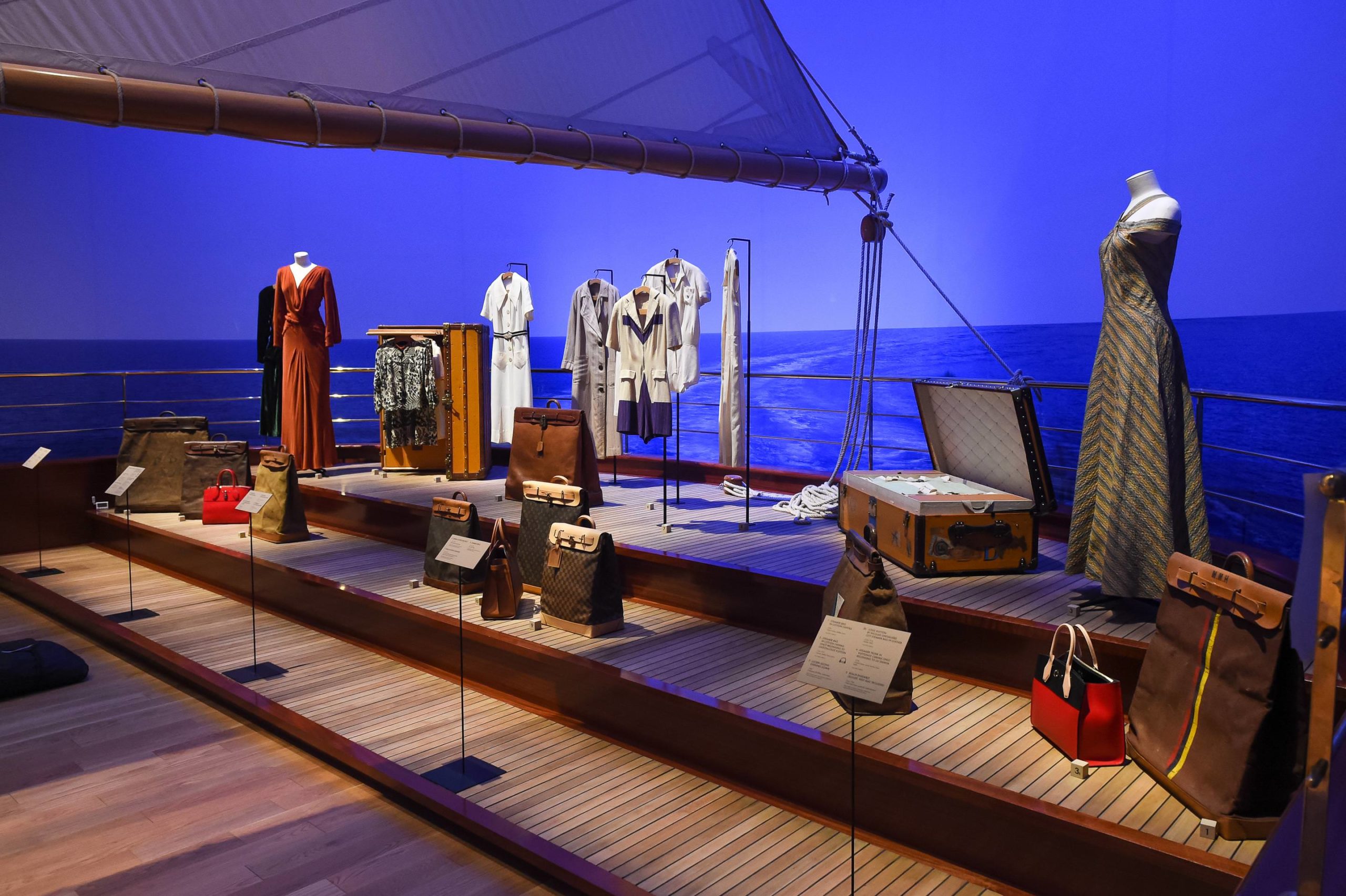 Installation view of Louis Vuitton’s “Volez Voguez Voyagez” in New York
Installation view of Louis Vuitton’s “Volez Voguez Voyagez” in New YorkPhoto by BFA
WW: Specific to the New York edition of the exhibition is the US section. The U.S. is one of the earlier countries Louis Vuitton expanded to internationally, right? In the 1890s in Philadelphia?
OS: There is a very close relationship between Louis Vuitton himself and America. When he founded his company at the very end of the 19th century, he begn to work with Wanamaker, in Philadelphia. Wanamaker imported and sold the trunk of Louis Vuitton.
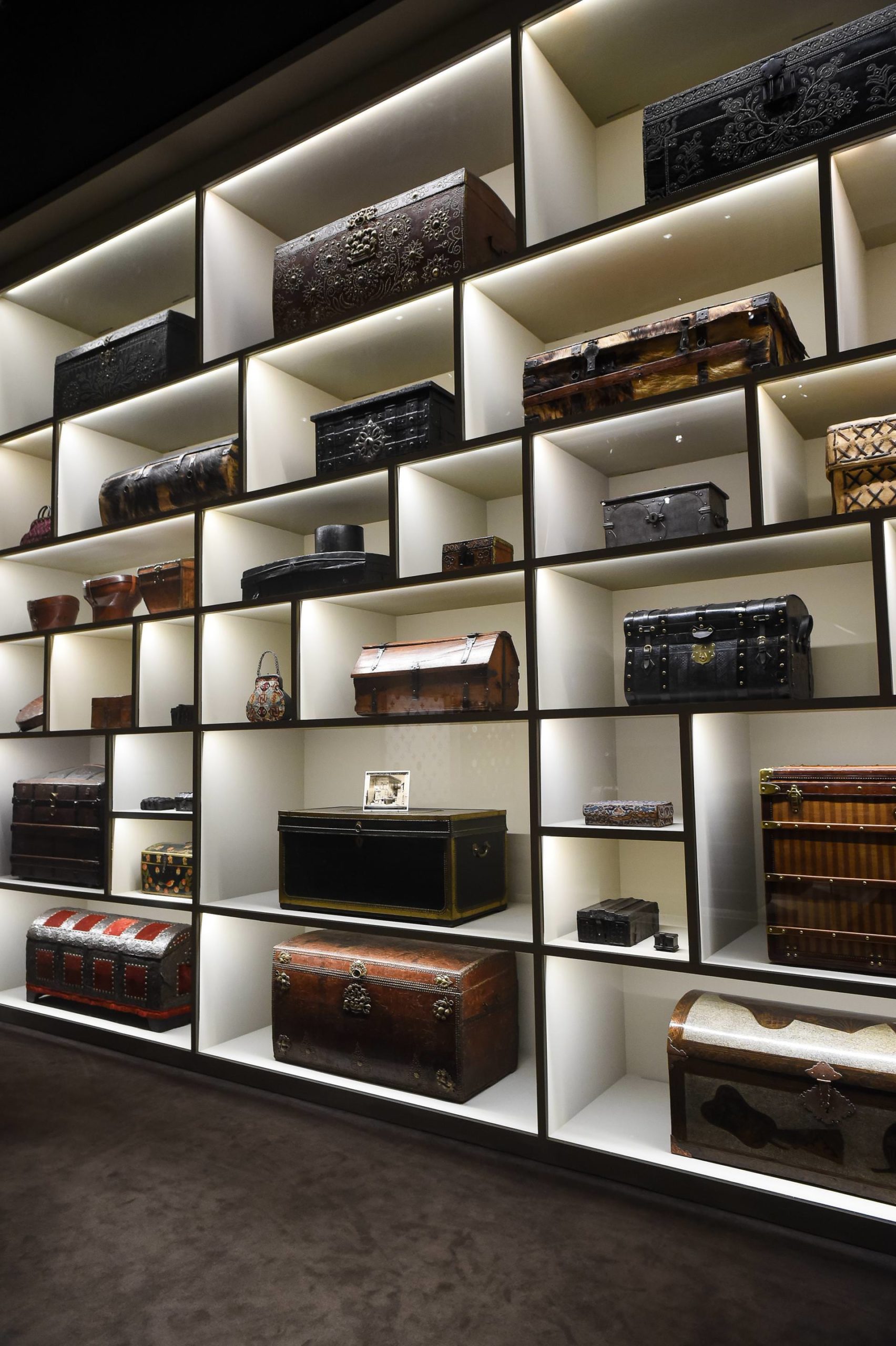 Installation view of Louis Vuitton’s “Volez Voguez Voyagez” in New York
Installation view of Louis Vuitton’s “Volez Voguez Voyagez” in New YorkPhoto by BFA
All around the exhibition there are some very nice pieces—trunks and bags belonging to well-known Americans. I really love this huge trunk made to transport paintings and it was made for René Gimpel, a famous art dealer in America. How luxe to travel from New York to Paris with your paintings!
WW: Speaking of art, Louis Vuitton has collaborated with many artists, like Damien Hirst, Yayoi Kusama, Steven Sprouse…do you have a favorite from those special collections?
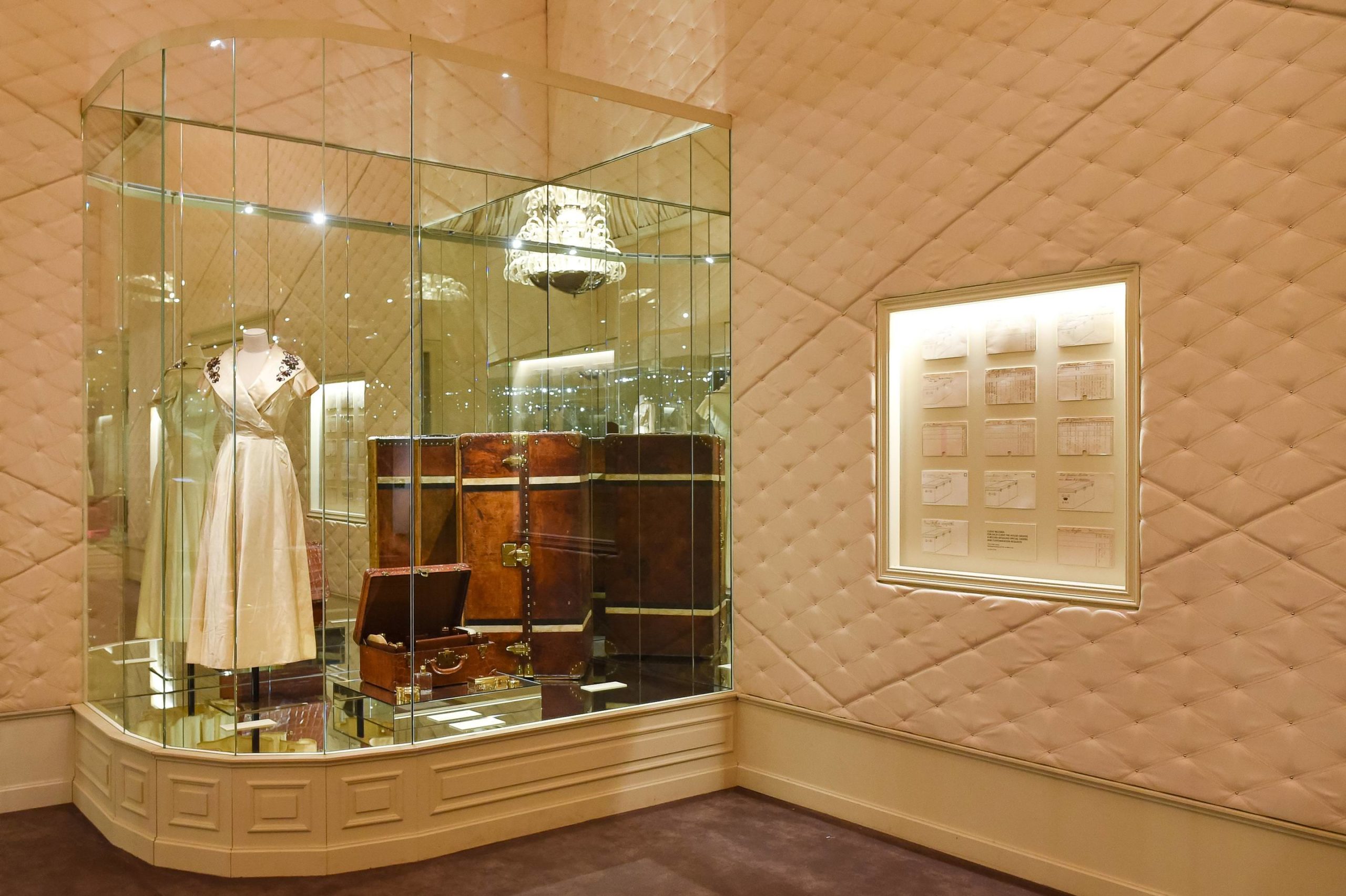 Installation view of Louis Vuitton’s “Volez Voguez Voyagez” in New York
Installation view of Louis Vuitton’s “Volez Voguez Voyagez” in New YorkPhoto by BFA
OS: I think the first collaboration that Marc Jacobs initiated with Stephen Sprouse when he just joined Louis Vuitton as an artistic director was very important. I have to say, as an historian, the bags which were born from it are very important for the history of accessories. Since the beginning, Louis Vuitton painted his monogram, “LV,” or that of the client, onto trunks in order to recognize them. So it was very subversive, the collaboration with Stephen Sprouse, but also quite natural.
Today, we could travel without anything, just our phones. But I think there is something interesting about the voyage of an art piece. When Jeff Koons is doing a bag of La Joconde, it means you can travel with La Joconde. I’m quite interested in the notion of traveling with an idea.
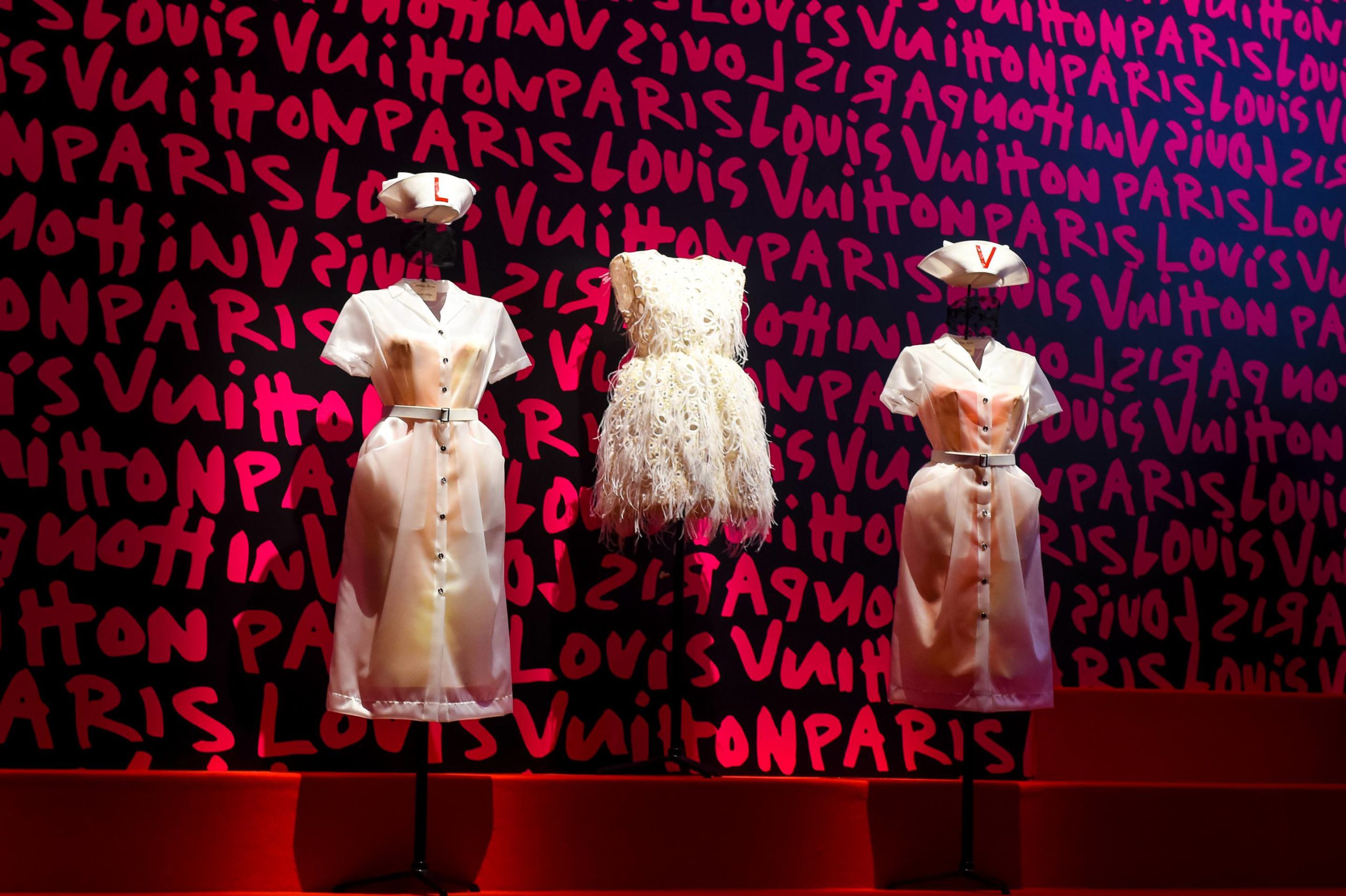 Installation view of Louis Vuitton’s “Volez Voguez Voyagez” in New York
Installation view of Louis Vuitton’s “Volez Voguez Voyagez” in New YorkPhoto by BFA






